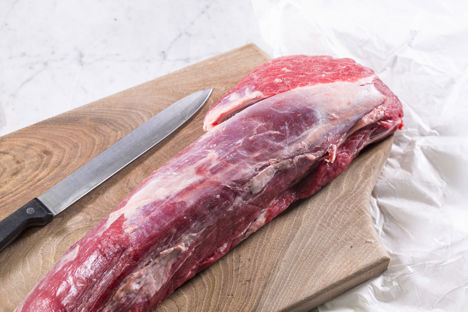Beef fillet is considered the king of all the beef cuts. It is the most tender cut as it comes from the least worked part of the animal. As a consequence, fillet is expensive to buy, especially in portions. To make it more cost-effective, try buying a whole fillet and preparing it yourself – the meat will keep happily for a month in the freezer and the trimmings can be used to make a tasty sauce.
When buying beef, always buy the best quality possible. Grass-fed beef has superior flavour and is a more sustainable way of farming than cattle that has been fed solely on grain.
Serving suggestions
Try Henry Harris’s timeless Filet au poivre recipe for a decadent supper, or for something a little more unusual try Marcus Wareing’s Beef fillet with asparagus, hogweed, radish and Parmesan. Another traditional use of beef fillet is the much loved Wellington; Andy McLeish serves his Wellington recipe with violet artichokes and a truffle vinaigrette.
You could also use the trim from the fillet to make a classic Steak tartare as Tom Aikens does, served with toasted slices of sourdough, while William Drabble’s Beef carpaccio with a sweet and sour onion and green bean salad makes for a stunning starter.
Get in touch
Please sign in or register to send a comment to Great British Chefs.


